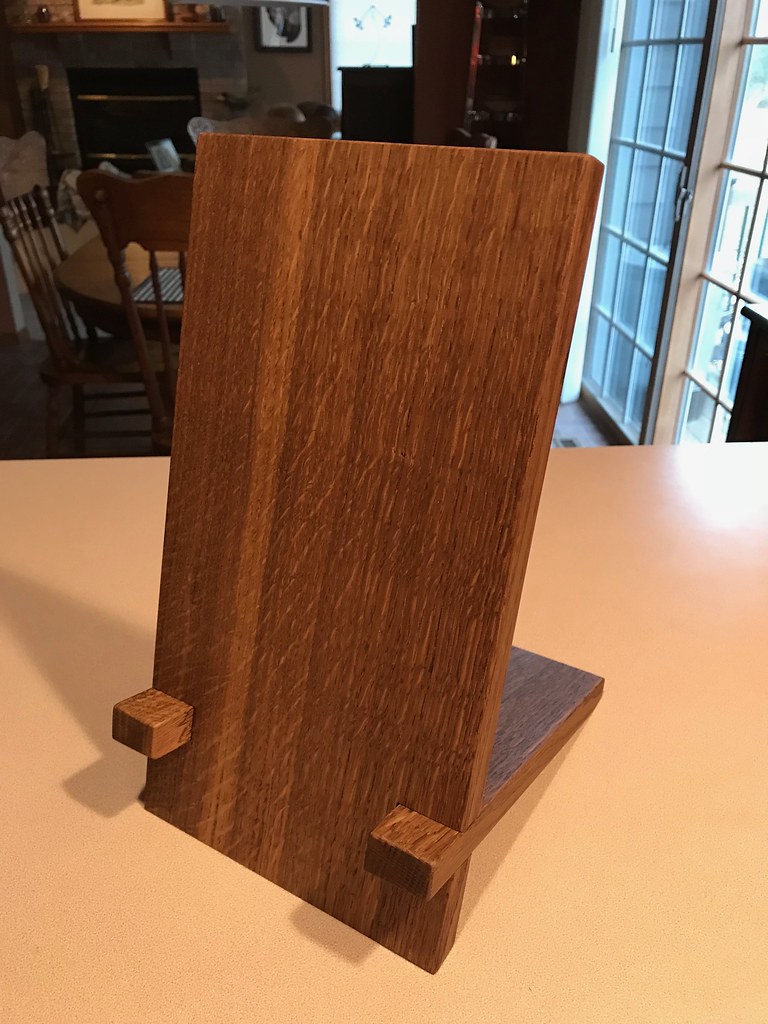My last few projects with White Oak have featured fairly elaborate finishing schedules involving dye and stain and oil and shellac and wax. This time I needed simple. My Daughter asked me for a stand for her tablet to use in her kitchen. I went with a 24 hour exposure to ammonia fumes (household strength) followed by a coat of natural Danish oil. Simple = Winner. One of my favorite finishes.






 Reply With Quote
Reply With Quote






